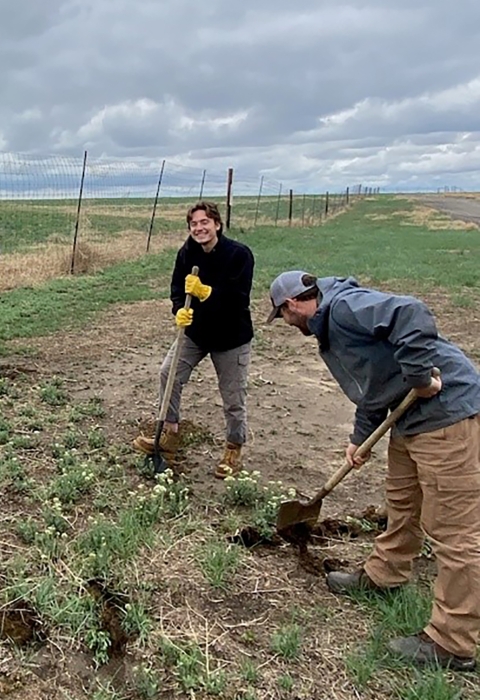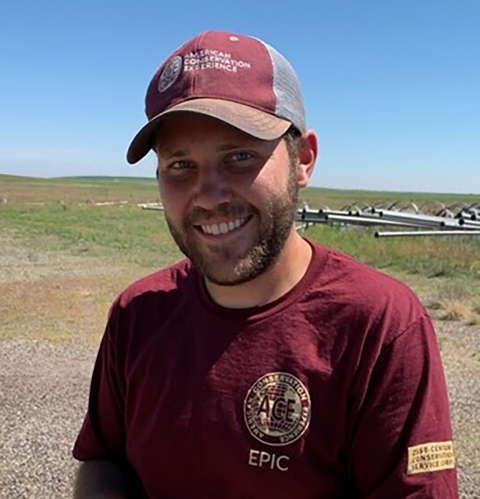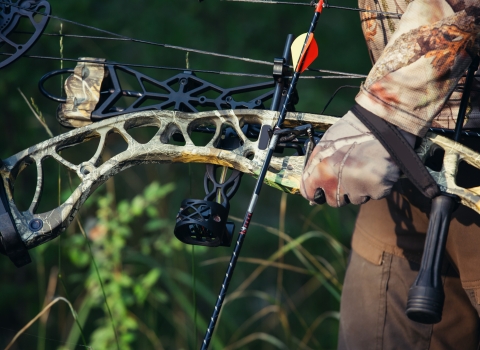Working on a 15,000-acre National Wildlife Refuge requires versatility in order to maintain healthy conditions for both the wildlife that call Rocky Mountain Arsenal (RMA) National Wildlife Refuge home, and the visitors that find solace from everyday life here.
The Refuge is located in Colorado, which is also known for the very real danger of wildfires. The Bipartisan Infrastructure Law Bipartisan Infrastructure Law
The Bipartisan Infrastructure Law (BIL) is a once-in-a-generation investment in the nation’s infrastructure and economic competitiveness. We were directly appropriated $455 million over five years in BIL funds for programs related to the President’s America the Beautiful initiative.
Learn more about Bipartisan Infrastructure Law plays a key part in the fire mitigation process by providing funding, which in turn hires crews to help mitigate the dangers that lead to uncontained wildfires.
As part of the Refuge’s mission, we manage the land in order to lessen the negative impacts of wildfires. One such approach for maintaining the integrity and beauty of the Refuge is by using mechanical controls.
Mechanical controls range from pulling weeds using handheld tools such as shovels, to mowing areas that are full of invasive weeds. This approach can also include building fences around young plants to keep the wildlife from munching on the fresh native greenery and creating a shortage of healthy native plants in the long run. In turn, this shortage of native greenery could create an opening for fire prone invasive plants to move in leading to a negative waterfall effect on the entire ecosystem and increased fire danger.
Tool #1: Hand-Pulling
Hand-pulling weeds is essential in the world of conservation.
While chemical controls such as using herbicides can be very effective, it is not always practical. Temperature ranges, rainfall, and wind speeds can all limit the effectiveness of chemical treatment.
This is where mechanical controls come in to play, as this approach is more flexible with when and where it can be utilized. Hand-pulling can be time-consuming and require lots of manpower, but when it is done correctly and efficiently it can be extremely effective.
With previous jobs including landscaping and working in the forests of Hawaii with the Division of Forestry, I have had my fair share of digging up invasive species invasive species
An invasive species is any plant or animal that has spread or been introduced into a new area where they are, or could, cause harm to the environment, economy, or human, animal, or plant health. Their unwelcome presence can destroy ecosystems and cost millions of dollars.
Learn more about invasive species that can wreak havoc on a landscape.
Tool #2: Mowing
At the Refuge, mowing is also a necessary operation. Mowing the fields is a crucial task in helping keep the fire fuels to a minimum. Fire fuels are anything that can ignite and increase the strength of a wildfire, such as grasses, dead weeds, or downed trees.
In addition to mowing portions of the wide-open fields on the Refuge, we also mow the perimeter of the Refuge in order to create a fire line, which is an open area of dirt or low vegetation that decreases fire’s ability to spread.
Creating fire lines is essential in keeping large fires contained, and it is even more important in the case of RMA due to its proximity to urban communities. Just outside of the Refuge’s fence line are neighborhoods with thousands of homes.
Tool # 3: Fencing
Another form of mechanical control is building fences to keep certain areas or plants from being affected or harmed by visitors, wildlife, or anything else that may unnaturally disturb the landscape we are trying to support.
Building small, fenced enclosures around newly planted vegetation drastically increases the chances of a newly planted tree, shrub, or bush to survive since it makes it much harder for wildlife to nibble on it for a tasty treat. This allows the native vegetation to grow up big, strong, and resilient before interacting with wildlife.
Fencing can also help when moving certain species of wildlife around the Refuge to act as self-reliant mowers of the landscape.
Tool # 4: Wildlife
One of my personal favorite mechanical controls is the wildlife themselves.
Wildlife is essential to the health of the local landscape by eating the seeds of native plants and redistributing them across the Refuge. Animals such as deer and bison also help stomp down the seeds into the dirt, essentially planting them and creating a place for water to pool, thereby making a perfect micro-habitat for the seed to grow. They also re-distribute seeds when the seeds attach themselves to the fur of the animals, and then drop off at a different location.
Wildlife, especially the bison, help to mow grasses around the Refuge and can be moved to different pastures depending which areas need more natural grazing. This reduces vegetation that can lead to increased fire danger, decreases invasive plant species, spreads native seeds, and increases resiliency in the native grasses that have evolved with bison grazing.
Building the Future
Fire management is an essential part of maintaining native ecosystems, and Rocky Mountain Arsenal is no different. There are many different avenues one can take in order to reduce the risk of wildfires, with several of them here at the Refuge being mechanical controls such as hand-pulling weeds, mowing fields, and letting the wildlife population do their role in reducing the potential fuels for a fire.
You can read up on the specifics of fire management on the Refuge here: https://www.fws.gov/story/2023-07/burning-bright
About the Author
Brian Greenfield is originally from the suburbs of Chicago, Illinois. He has always been interested in working in nature, and helping create a more native ecosystem wherever he ends up. Brian graduated in 2019 from Illinois State University with a degree in Conservation Biology. He then interned with the Division of Forestry in Hawaii, which eventually opened the door to a position at Rocky Mountain Arsenal. Brian enjoys hiking, photography, and playing soccer in his free time.








